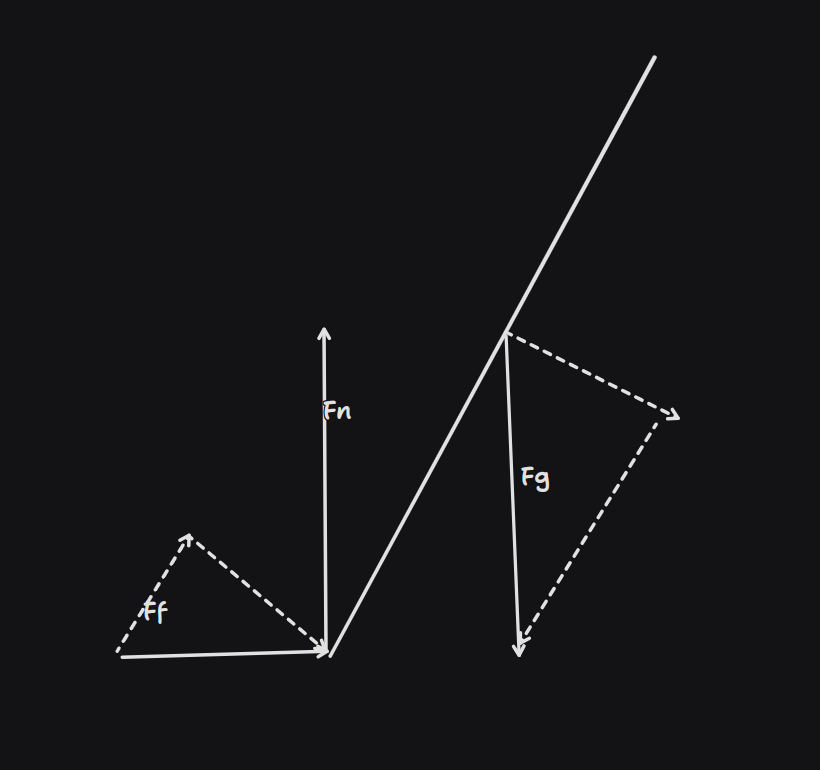
The weight of the door produces a torque rotating the door clockwise.
Hence, $r_{v}=\frac{1}{2}\times mg$ ($m$ is the mass of the door).
Reaction force from hinges - components
Estimate the reaction forces on a standard door.
Let the door be $1m$ by $2m$, and weight $10kg$. Top and bottom hinges are $0.4m$ from the top/bottom of the door respectively.
Take torque around bottom hinge.
$R_{h}\times1.2=98\times0.5$ ... $R_{h}=40.8N$
$R_{v}=\frac{1}{2}\times98 =49N$, assuming equal loading. If not this, then you gotta play around with the math a bit more.
$R=\sqrt{ 40.8^{2} +49^{2}}=63.6N$ $\theta=\tan^{-1}\left( \frac{40.8}{49} \right)=39.8°$
Hence, this is $39.8°$ left of the vertical from the top hinge.
It would also be $39.8°$ right of the vertical for the bottom hinge.
Leaning into corners when in circular motion increases $F_{c}$ because it makes the reaction force steeper (draw diagrams to answer).
Imagine stick perfectly vertical and going in circular motion. Because friction acts at bottom of stick, we have an unbalanced rotational force. So we kinda do need to lean, to counteract this frictional force.

{{car example}}
As car go faster, $F_{c}$, i.e. $F_{friction}$ increases, resulting in an unbalanced rotational force so it flips over :(
This kinda causes the wheel opposite to circular motion to have all the weight. Once this is exceeded, the car flips over that way.1 Reasons: torque. We don't really care about this much, just should know the theory.
e.g. If the car is moving to the right for circular motion, if it speeds up too much it will flip over to the left. ↩